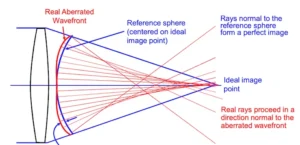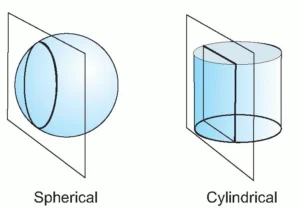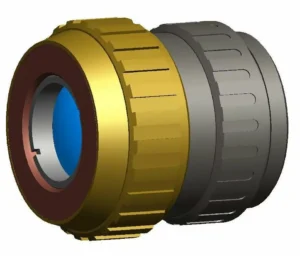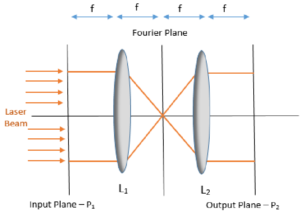In the world of lighting design, we encounter a variety of metrics that describe the performance and effectiveness of a light source. Recently, we had a customer provide an illumination specification in watts, which is a radiometric unit, but for applications involving human vision, such as architectural lighting or display technologies, optical engineers typically work with lumens, a photometric unit. This situation highlights an important distinction: radiometric data measures total electromagnetic energy, while photometric data focuses only on the visible light that impacts human perception. Understanding these two concepts is essential for anyone working in lighting design, optical engineering, or related fields.
1. What Is Radiometric Data?
1.1 Definition
Radiometry is the science that measures electromagnetic radiation, encompassing the full range of wavelengths, including visible light, infrared (IR), and ultraviolet (UV). Radiometric data is measured in watts (W), and it refers to the total power emitted by a light source, regardless of whether the light is visible to the human eye.
1.2 Measuring Radiant Energy (Watts)
Watts are a measure of power, representing the rate at which energy is emitted, transmitted, or received. When we say a light source outputs a certain number of watts, we are referring to the total energy it radiates. This energy includes not just the visible spectrum, but also wavelengths that are outside of human vision, such as IR and UV light.
For example, the sun emits radiation across the electromagnetic spectrum, from high-energy ultraviolet rays to infrared heat, most of which is invisible to the naked eye. Radiometric measurements capture all of this energy, providing a comprehensive understanding of the total output of a light source.
1.3 Applications of Radiometric Measurements
Radiometric data is crucial in industries where the entire electromagnetic spectrum is relevant. For example, in solar energy systems, scientists are interested in capturing energy from both visible and non-visible wavelengths. In telecommunications, radiometry helps measure the power of signal transmissions across various frequencies. In fields like astronomy and remote sensing, measuring infrared or UV light is essential for detecting objects or phenomena invisible to human vision.
Laser systems and other specialized optical devices often rely on radiometric data, as they operate in non-visible parts of the spectrum. These applications require precise control and measurement of light energy, regardless of whether humans can see it.
2. What Is Photometric Data?
2.1 Definition
Photometry, on the other hand, focuses exclusively on visible light, the part of the electromagnetic spectrum that the human eye can detect (roughly from 380 to 780 nanometers). Photometric data measures light in terms of how bright it appears to humans, which is why it’s the standard used in fields like lighting design, where human perception is key.
2.2 Measuring Visible Light (Lumens)
The unit of measurement for photometric data is the lumen (lm), which represents the total amount of visible light emitted by a source as perceived by the human eye. Unlike watts, which measure total energy, lumens account for the fact that human eyes are more sensitive to some wavelengths (like green light) than others (like red or blue light).
For instance, two light sources with the same power output in watts may produce very different lumen values depending on their spectral composition. A source emitting primarily green light (where the human eye is most sensitive) will have a higher lumen value than a source that emits primarily UV or IR light, which the eye can’t detect.
2.3 Applications of Photometric Measurements
Photometric data is essential in any application where human visibility is the focus. For example, in architectural lighting, designers use lumens to ensure that spaces are well-lit for human activities. In automotive lighting, photometric data is used to optimize headlights so that drivers can see clearly without causing glare.
Display technologies, like TVs and computer monitors, are also designed based on photometric principles to ensure that they produce bright, crisp images that are easy for people to see. Essentially, photometric measurements help ensure that lighting is comfortable and functional for human use.
3. Key Differences Between Radiometric and Photometric Data
3.1 Spectral Range
The key difference between radiometric and photometric data lies in the range of the electromagnetic spectrum they cover. Radiometric data includes all electromagnetic radiation, while photometric data is limited to visible light.
3.2 Units and Measurements
Radiometry uses units like watts (W) to measure power, joules (J) to measure energy, and irradiance (W/m²) to measure power per unit area. Photometry, on the other hand, uses lumens (lm) to measure total visible light output, lux (lm/m²) to measure light intensity per unit area, and candela (cd) to measure light intensity in a specific direction.
3.3 Purpose
Radiometric data is important in applications where total energy output across all wavelengths is the focus, such as scientific experiments or energy production. Photometric data, meanwhile, is crucial for designing systems that meet human visual needs.
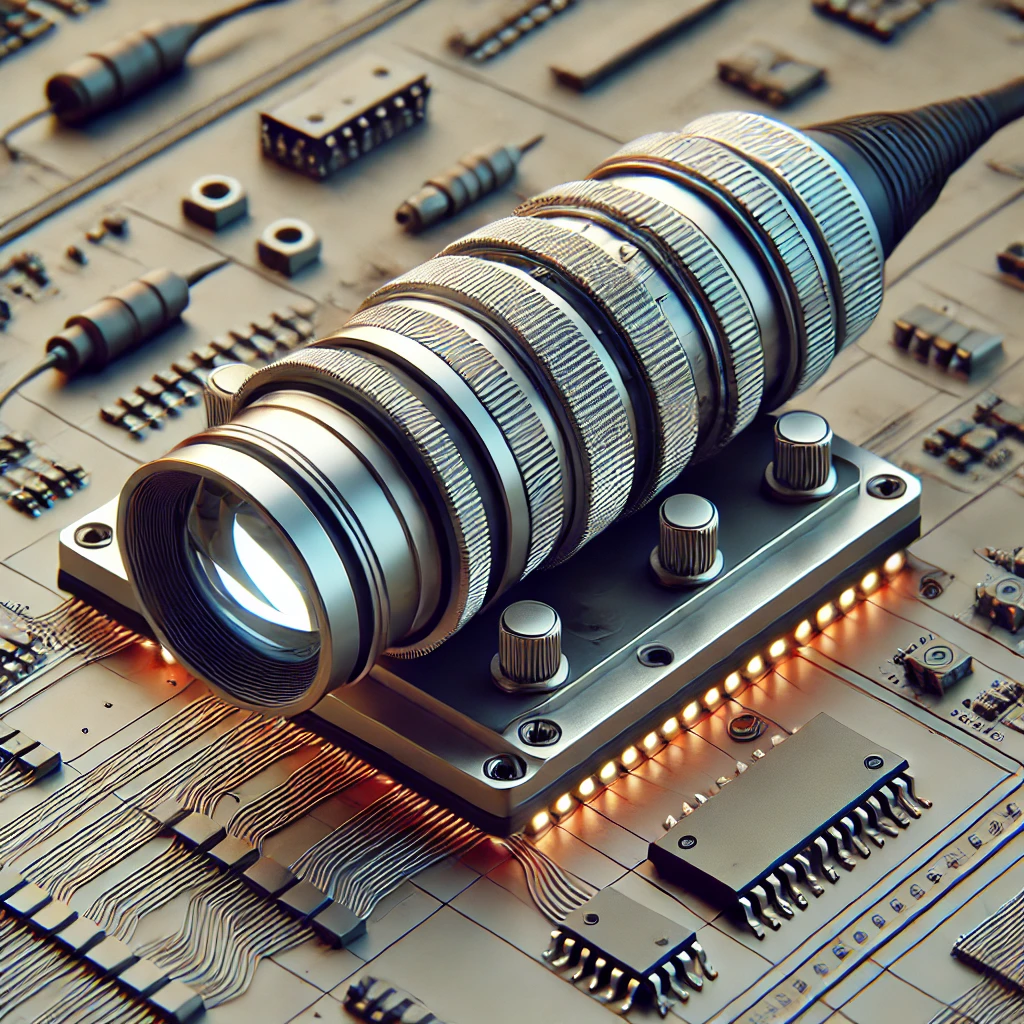
4. Why Optical Engineers Typically Use Lumens
4.1 The Human Factor
Optical engineers working on lighting design typically use lumens because they are concerned with how light will appear to the human eye. Whether designing lighting for buildings, vehicles, or displays, the goal is to ensure that the light is bright enough and distributed in a way that is comfortable for human vision. Since lumens directly correspond to perceived brightness, they are the most relevant unit for these applications.
4.2 Bridging the Gap Between Radiometry and Photometry
While lumens are often the focus in human-centered applications, radiometric data can still play a role in some designs. For example, when developing lighting for both humans and cameras or sensors, engineers may need to account for both visible and non-visible light. In these cases, understanding both radiometric and photometric data becomes crucial.
There are tools and formulas available to help engineers convert between watts and lumens, though these conversions are not always simple. The spectral power distribution (SPD) of a light source plays a key role in these calculations, as the efficacy of converting energy to visible light varies by wavelength.
5. How to Convert Between Radiometric and Photometric Units
5.1 The Role of Spectral Power Distribution (SPD)
To convert between radiometric and photometric units, you need to know the spectral power distribution of the light source. SPD describes how the power of a light source is distributed across different wavelengths. Since the human eye responds differently to various wavelengths, the SPD helps determine how much of the emitted energy will contribute to visible light.
5.2 Lumens per Watt (Luminous Efficacy)
Luminous efficacy is the ratio of lumens to watts and indicates how efficiently a light source converts electrical energy into visible light. For example, an LED light might produce 100 lumens per watt, while an incandescent bulb might only produce 15 lumens per watt. Different light sources have different efficacies based on their SPD and how well they convert energy into visible light.
5.3 Challenges of Conversion
One challenge in converting between watts and lumens is that not all the energy produced by a light source is visible. A light source that emits mostly UV or IR radiation will have high wattage but low lumen output since the human eye can’t see those wavelengths. As a result, it’s not always possible to directly convert radiometric data into photometric values without considering the spectral characteristics of the light source.
6. Real-World Case Study: A Customer’s Request
6.1 The Problem: Specifying in Watts Instead of Lumens
Recently, a customer provided an illumination specification in watts, expecting that the wattage alone would give us enough information to design the lighting system. However, since the application involved human vision, we needed the specification in lumens to understand how bright the light would appear to the human eye. The customer’s use of radiometric data (watts) instead of photometric data (lumens) created some confusion.
6.2 How to Address It
To address this issue, we calculated the spectral power distribution of the light source and used the luminous efficacy of the source to convert watts into lumens. This allowed us to ensure that the lighting design would meet the customer’s needs for human visibility, despite the initial misunderstanding.
Moving forward, we’ve set clear guidelines for our clients to provide illumination specifications in lumens for applications involving human vision, to avoid similar issues in the future.
Conclusion
Understanding the difference between radiometric and photometric data is crucial for anyone working in lighting design, optical engineering, or any field where light plays a role. While radiometric data measures the total energy emitted by a light source, photometric data focuses on the visible light that impacts human vision. By using lumens instead of watts, optical engineers can ensure that lighting systems are designed to meet the visual needs of people. Whether you’re developing lighting for buildings, vehicles, or devices, understanding both types of data will help you make informed decisions and create better designs.
FAQ: Radiometric vs. Photometric Data in Lighting Design
1. What is the difference between radiometric and photometric data?
Radiometric data measures the total electromagnetic energy emitted by a light source across the entire spectrum, including infrared and ultraviolet, using watts (W). Photometric data, on the other hand, focuses only on visible light and measures how bright light appears to the human eye in lumens (lm).
2. Why do optical engineers use lumens instead of watts for lighting design?
Lumens measure the visible light that humans can perceive, making it more relevant for applications where human vision is involved, such as architectural lighting, automotive lights, and display screens. Watts measure total energy output, which includes non-visible wavelengths, making it less useful for lighting design aimed at human vision.
3. How can I convert watts (radiometric data) to lumens (photometric data)?
To convert watts to lumens, you need to know the spectral power distribution (SPD) of the light source and its luminous efficacy (lumens per watt). The conversion is not straightforward because it depends on the light source’s specific emission across different wavelengths.
4. What types of light sources are typically measured using radiometric data?
Light sources that emit non-visible light, such as lasers, ultraviolet lamps, and infrared heaters, are often measured using radiometric data. These measurements are important for applications like solar energy collection, telecommunications, and certain scientific experiments.
5. Why is luminous efficacy important in lighting design?
Luminous efficacy indicates how efficiently a light source converts electrical energy into visible light. A higher luminous efficacy means more lumens are produced per watt of energy, making the light source more efficient. This is important when designing energy-efficient lighting systems.
6. When would I need to use radiometric measurements in lighting design?
Radiometric measurements are useful when designing systems that involve non-visible light, such as sensors, cameras, or systems that operate in ultraviolet or infrared ranges. For human-centric lighting design, photometric data (lumens) is usually more relevant.
7. What is the electromagnetic spectrum, and how does it relate to lighting?
The electromagnetic spectrum includes all wavelengths of electromagnetic radiation, from short-wavelength gamma rays to long-wavelength radio waves. In lighting, radiometric data measures all of this energy, while photometric data focuses only on the visible light portion (380-780 nm) that affects human vision.
8. What tools do engineers use to measure photometric and radiometric data?
For photometric data, tools like photometers and lux meters measure light intensity in lumens. For radiometric data, radiometers or spectroradiometers are used to measure total energy output across all wavelengths, including infrared and ultraviolet.

